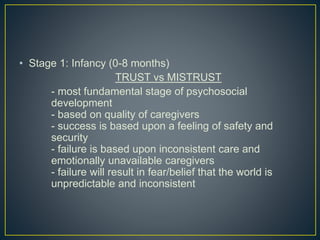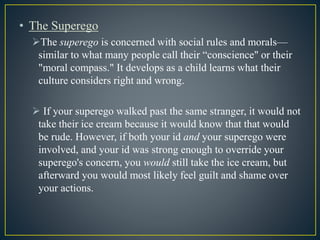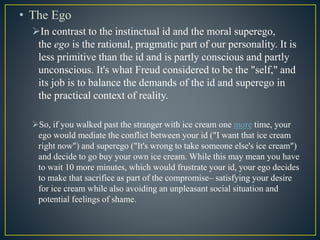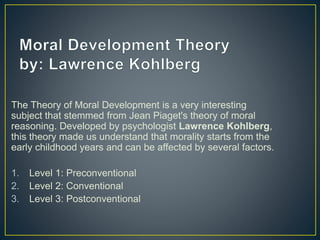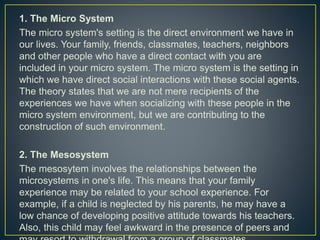Erik Erikson proposed an 8-stage theory of psychosocial development where individuals develop their identity and sense of self through resolving crises of trust, autonomy, initiative, industry, identity, intimacy, generativity, and integrity. Each stage is characterized by a psychological conflict where success leads to healthy development and failure can result in negative outcomes. The stages span from infancy to late adulthood and are influenced by social and environmental factors.


